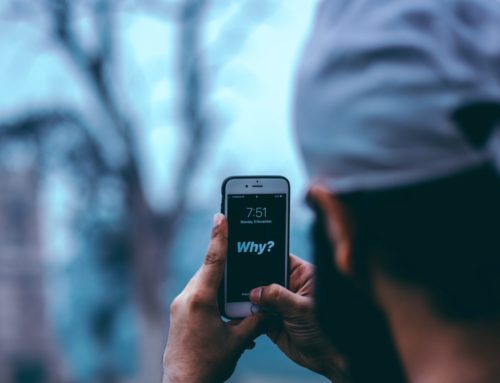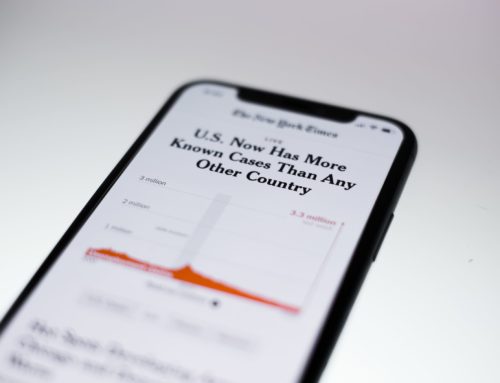What Can We Do?
Benro Ogunyipe, MPA
As an advocate, I use my privileged position to educate Deaf people with lower socioeconomic status and intersectional backgrounds about their basic rights.
I often encounter individuals, especially young Black Deaf persons from inner cities, who don’t have access to social resources and I explain to them the importance of conducting critical thinking when they are in disadvantaged situations. Case in point, a Deaf person who I have known since college was arrested for a serious crime in which he claimed innocence. Eventually, he had a jury trial, was convicted, and is now serving a life sentence in prison. Going back to the custodial interrogation, he willingly signed a statement in which he waived his right to an attorney because he wanted to tell the truth. Little did he know that the ramifications of telling the truth could be self-incrimination because whatever he told the police could be used against him in the court of law (and it eventually was).
It was at this very moment I realized there may be hundreds or thousands of Deaf persons who have been in similar disadvantaged positions and ended up with serious consequences due to their inability to understand legal terminology in both written text and ASL interpretations.
The legal system is an extremely complex system with varying rules of law. Understanding the nuances and levels of complexity, without the benefit of a Juris Doctorate, can be an impossible task. Every day, thousands of people take part in the legal system. Examples include everything from minor traffic violations to serious offenses such as burglaries or even homicides. Many Americans are witnesses, victims, culprits, plaintiffs, or defendants. Americans also serve in the system such as judges, lawyers, bailiffs, law enforcement officers, court reporters, jurors, and even sign language interpreters.
The lingo in the American legal system is designed to communicate legal terminology we do not often adopt in daily conversation. That is why attorneys or legal representatives are utilized – people who are very familiar with the legal system and its terminology. The National Association of the Deaf (NAD) states, “Deaf and hard of hearing individuals face greater legal challenges due to communication barriers that are typically not recognized by lawyers, courts, or police.” American Sign Language (ASL) is a visual language which has a standardized form used in schools, staff meetings, and conferences. It is also informally used at homes, social events, and bars. However, only a few legal terms have been standardized in ASL. Signs and concepts can be translated in various ways by sign language interpreters and certified Deaf interpreters.
One of the most noted, and one of the most important, legal terms is the Miranda warning (also known as the Miranda Rights). Police departments are required to advise people placed under arrest of their Miranda Rights, meaning they have the right to refuse to answer questions or provide information to law enforcement officials while in police custody or during custodial interrogation. In some cases, Deaf people or Deaf suspects are not familiar with their Miranda Rights, and misunderstandings can be exacerbated if the interpreter is not experienced in legal jargon. There is no standardized translation of the Miranda warning (Washington, 2016). In areas where there are large Spanish-speaking populations, non-Spanish speaking police officers sometimes carry cards with the Miranda Rights translated into Spanish for people who only read or speak Spanish. However, there have been legal issues with translations of the Miranda Rights into Spanish that have led federal appellate courts to rule them inadmissible in district courts. The appellate courts specifically cited their reasoning that these translations were “affirmatively misleading” and did “not satisfy Miranda’s strictures” (Hardymon, 2016).
When an arrested Deaf person either reads the written English text version of the Miranda Rights or watches an interpreted version by an ASL interpreter, the interpretation is not a standard ASL translation, which may mean that the Deaf person does not fully understand their rights.
Without full comprehension, they cannot carefully deliberate whether to respond to questions or provide information to law enforcement officials. Both reading written text and watching an ASL interpreted version of the Miranda Rights may be deemed inadequate for some Deaf people. Only a small percentage of Deaf people can read at the 6th-8th grade level of reading ability required to understand the Miranda Rights (Andrews, 2007; PERF). And remember ASL has only a few standard legal terms.
You have the right to remain silent. Anything you say can and will be used against you in a court of law. You have the right to an attorney. If you cannot afford an attorney, one will be provided for you. Do you understand the rights I have just read to you? With these rights in mind, do you wish to speak to me? MirandaWarning.org
A Deaf person in the interrogation room is not receiving a standard English version of the Miranda Rights, but rather an interpretation by the sign language interpreter. When a detective asks a Deaf person suspected of committing a serious crime if they want to answer questions, a “yes” response may or may not be from a place of understanding. The person may not realize a self-incriminating statement has ensued. The Deaf person may not have fully understood the Miranda Rights interpretation by the interpreter. The interpreter may not have been allowed to interrupt the interrogation process and advocate or explain their role. The interpreter sometimes needs to repeat their interpretation one or two more times in different ways with emphasis on important points. Some areas of emphasis may be, “Do you know what this means? If you allow yourself to tell the police what happened, then they might use your statement as evidence to share with the court (admissible evidence) and you may be guilty of it?” After clarifying the interpretation, the Deaf person could change their mind and remain silent throughout the custodial interrogation. Awareness of the Miranda Rights and the basic constitutional rights as protected by the Fifth and Sixth Amendment are lacking. There is a need for constant conversation in the Deaf community simply because it is not often talked about. It is one of the most important civil rights vested to each individual.
The Midwest Center on Law and the Deaf (MCLD) began providing services in 2002 to help bridge the gap between the Deaf community and the justice system in the Midwestern states (personal interview). This was done by connecting Deaf communities with attorneys and advocating for their rights, including the right to have an interpreter. MCLD also produced a DVD called “Your Day in Court,” which educated and helped Deaf consumers understand court proceedings. Unfortunately, MCLD was closed in 2015 (personal interview). In 2011, Helping Educate to Advance the Rights of Deaf Communities (HEARD) was founded to assist Deaf incarcerated individuals with access issues, educate the Deaf community about the law and current legal issues, and investigate possible wrongful conviction cases. Some cases were a result of erroneous translations, misinterpretations, and miscommunications between Deaf individuals and their interpreters (HEARD).
Deaf people are at a disadvantage with the complexity of the legal system and the communication barriers that exist. Deaf individuals with intersectional backgrounds, including but not limited to DeafBlind and Deaf-disabled, face greater legal challenges because of additional layers of accessibility barriers, not just the communication barriers they face. Self-advocacy is one thing, but understanding the complexity of one’s legal rights is another. A Deaf person’s constitutional rights do not always mean justice will be served when they do not fully understand the legal system.
Sign language interpreters are in a privileged position to recognize when Deaf people are in disadvantaged situations. Interpreters can prevent wrong moves and head off serious negative consequences for Deaf people in legal situations.
Legal ASL interpreters are obliged to ensure they facilitate receptive and expressive communication accurately and effectively for all parties involved in an impartial manner. Are Legal ASL interpreters also obliged to ensure that Deaf people’s legal rights are protected (whether victims, witnesses, or culprits)? If an interpreter recognizes that a Deaf person is in a disadvantaged situation, for example, should they discourage accepting a plea deal until the Deaf person fully understands the legal implications? Sign language interpreters are expected to answer subpoenas and can be challenged in court by a Deaf person or their attorney based on the accuracy of their interpretations.
Are we, collectively as a community, responsible for ensuring Deaf people’s civil rights are protected from self-incrimination as provided by the Fifth Amendment?
What ideally are the best practices in this situation? Should a group of legal interpreters, attorneys, Deaf linguists, and various Deaf people of intersectional backgrounds come together to discuss and develop best practices for ASL interpretation in legal settings? Could there be an ASL dictionary, fully equipped with legal terminology, circulated through social media to schools and communities until legal jargon becomes standardized? The conversation should continue in both Deaf and interpreting communities, conferences, articles, and blogs. While you read this article on your smartphone or tablet waiting to meet a fellow sign language interpreter, you should begin thinking of ways to discuss with your team the best approach to translating the Miranda warning. These conversations should happen despite the lack of currently standardized interpretations for the Miranda Rights.
References
ABC7. (February 12, 2012). Legal center for deaf loses money, could shut down. Retrieved from https://abc7chicago.com/archive/8540841/
Andrews, J. F. (2007). The Bill of Rights, Due Process and the Deaf Suspect/Defendant. Journal of Interpretation, 9-35. Retrieved from https://njdc.info/wp-content/uploads/2014/10/Bill-of-Rights-Due-Process-and-the-Deaf-Suspect-Defendents-JOI-2007.pdf
Anton, M. (November 3, 2003). You Have the Right to a Sign Language Expert. Los Angeles Times. Retrieved from http://articles.latimes.com/2003/nov/14/local/me-onthelaw14
Hardymon, N.R. (2016). Protecting Non-Native English Speakers from Self-Incrimination. Kentucky Law Journal. Retrieved from http://www.kentuckylawjournal.org/index.php/2016/11/19/protecting-non-native-english-speakers-from-self-incrimination/
HEARD. (n.d.). History. Helping Educate to Advance the Rights of Deaf Communities. Retrieved from https://behearddc.org/about-us/history/
MirandaWarning.org. (n.d). What Are Your Miranda Rights? Retrieved from http://www.mirandawarning.org/whatareyourmirandarights.html
NAD. (n.d.). Justice. National Association of the Deaf. Retrieved from http://nad.s1001.sureserver.com/issues/justice
Police Executive Research Forum (PERF). (n.d.). Miranda and the Deaf Suspect. Abstract. National Criminal Justice Reference Service. Retrieved from https://www.ncjrs.gov/App/publications/abstract.aspx?ID=154924
Potterveld, T. (July 27, 2016). Scales of Justice: Legal Ramifications for Sign Language Interpreters. Street Leverage. Retrieved from https://streetleverage.com/2016/07/scales-justice-legal-ramifications-sign-language-interpreters/
Washington, S.M. (September 9, 2016). Miranda rights are meaningless if they are mistranslated. Retreived from https://www.smwashingtonlaw.com/blog/2016/09/miranda-rights-are-meaningless-if-they-are-mistranslated.shtml
Benro Ogunyipe, MPA, is a Senior Accessibility Specialist for the Illinois Department of Human Services in Chicago, Illinois. He has served as president, vice president, and also as chair of the board of National Black Deaf Advocates, Inc. from 2007 to 2013. In 2014 and again in 2016, U.S. President Barack Obama appointed Benro to the National Council on Disability. Benro was also appointed by three different Illinois Governors to public bodies. He is a current board member of the National Association of the Deaf. Benro earned a Bachelor of Arts degree from Gallaudet University and a Master of Public Administration (MPA) degree from DePaul University.








Leave A Comment
You must be logged in to post a comment.